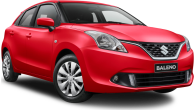Renault has had a chequered history in this country. In earlier times the French carmaker enjoyed a popular following here, its cars were locally assembled, it even had a factory team competing in rallies, and won a national rally championship.
That was in the 1960s and ’70s when Renault was at the peak of its popularity, with a range of interesting small cars including the popular R8 and 10, the 12 and quirky 16. Since those heady times, however, Renault has gone through some lean times with a series of distributors trying to get the brand kick started again without making a breakthrough.
The 19 was launched in the early 1990s when Volvo was handling Renault here. Unfortunately the Volvo attempt to relaunch the brand was also doomed to failure, and further damaged a brand that was by then losing its lustre.
There were many reasons why Volvo’s attempt to relaunch Renault failed, among them the French government’s desire and determination to reduce a certain atoll in the Pacific ocean to uninhabitable rubble.
I remember well one trip to Melbourne airport in a Renault 19 I had as a long-term test car in 1995. I was driving along the airport freeway, minding my own business, when out of the blue swooped a rather ratty old Laser covered in “Ban the Bomb” slogans.
At first the Laser sat on my rear bumper, headlights flashing, horn blaring. Its female driver, nostrils flaring and eyes bulging with obvious rage, then pulled out and roared past before slicing in front of the Renault and slamming on her brakes, forcing me to swerve violently to avoid a collision.
It was pretty scary stuff. It was the environment into which Volvo was trying to promote the French company’s cars.
Renault had little chance of success when there was such a strong anti-France feeling in the community. It didn’t, and the brand disappeared from local showrooms once again, until the recent merger with Nissan saw it mount another attempt in 2001.
It’s a pity that the 19 never had a chance to shine, as it was a good car, one now worth considering if you’re in the market for an affordable budget Euro.
MARKET WATCH
The 19 first landed on these shores in 1991. It was a modest entry with one model, the TXE, which was offered as a roomy sedan or five-door hatch.
There was just one engine, a 1.7-litre single overhead camshaft fuel-injected four which put out a modest 69 kW at 5250 revs, and drove the front wheels through either a five-speed manual of four-speed auto.
The list of standard equipment was quite long, and included power steering, power windows, remote central locking, AM/FM radio cassette sound, velour trim, adjustable steering column, tachometer and a useful split-fold rear seat. Air-conditioning was added to the list in 1992.
A three-tier sports pack also became available in 1992. The base pack comprised of 13-inch alloy wheels, a rear spoiler, and a sports steering wheel; the intermediate pack had 14-inch alloy wheels and low profile tyres, while the top pack also had a body kit.
The options list was quite short, comprising only air-conditioning before it became standard in March 1992, and metallic paint.
A facelifted 19 was launched in 1993 and offered a much expanded choice of models, the RT, RT Plus, Alize and Baccara.
All were again offered as a sedan or five-door hatch, with a mild reworking of the boxy shape with a fresh new front with a new bonnet, grille, and headlamps.
Power came from the same 1.7-litre single overhead cam fuel-injected four. By 1993 the 69 kW it put out was considered rather puny when most off its rivals boasted bigger 1.8-litre engines punching out a fair bit more power.
The transmission choices were also unchanged, with a five-speed manual and four-speed auto available.
Among the standard features, the RT had power steering, air-conditioning, power windows, velour trim, tilt column, remote central locking, split-fold rear seat, and fog lamps.
The RT Plus was only available with manual trans, and had alloy wheels, metallic paint, rear headrests, power mirrors, and a CD player.
Black bumpers and mirrors distinguished the Alize. It also had power steering, remote central locking, four-speaker sound, power front windows and mirrors, rear head restraints, and a split-fold rear seat.
Sitting atop the tree was the Baccara, which boasted everything the RT Plus had, plus a driver’s airbag, and seat belt pretensioners.
Another upgrade came in the form of the Series 3 in 1995. That brought with it a 1.8-litre engine, and alloy wheels grew from 13 inches to 14, and the Alize replaced the RT.
Although the larger engine was warmly welcomed it still didn’t endow the 19 with spirited performance. When it was tag-teamed with the auto it had just 66 kW, at 5000 revs, but when mated to the manual trans it had a more reasonable 81 kW, at 5500 revs.
IN THE SHOP
The 19’s performance was nothing to write home about. It was adequate rather than spirited, but the 1.7-litre SOHC four was quite smooth and got the job done.
Like most French cars, the 19 had lots of wheel travel and rolled quite a lot, but not to the detriment of handling, which was quite precise despite the wooden feel to the steering. Ride was plush, thanks to the long wheel travel, making the 19 a pleasure to drive.
The 19 wasn’t a standout on any front, except perhaps for comfort, but it did everything quite well. It was a good all-rounder.
The auto trans can be troublesome, so much so that it’s better to avoid them. Parts to rebuild them aren’t readily available here, and a replacement ’box will set you back $4000-$5000.
Parts can be a problem. Renault Australia doesn’t stock parts for old models like the 19, but specialist suppliers can provide most things. More adventurous owners, like Josef Boehm have found the internet useful for sourcing parts from overseas.
For a rewarding drive look for a well cared for manual car with low mileage, and a service record.
OWNERS’ VIEWS
Joe Boehm says the 19 rides well, handles well, is comfortable and economical. He has had no trouble with the engine, which is geared towards low down performance rather than high end, but he knows the troubles with the auto transmission well. After being frustrated at the lack of local expertise to fix the auto, he resorted to the net where he found parts and help to repair the transmission himself. He also says the auto runs hot and he’s fixed that by fitting an external oil cooler.
Sean Cole’s 1993 19 TXE five-door auto hatch has done over 200,000 km in the service of his family. It was bought secondhand six years ago, and has since travelled extensively around Victoria and interstate. Sean says “it has always been a pleasure to drive” and “just keeps going”.
LOOK FOR
• comfortable compliant ride
• assured road holding
• modest performance
• quiet and refined
• automatic trans meltdown
• parts can be hard to find
THE BOTTOM LINE
Worth a look if you’re after a smooth, refined small sedan or hatch that rides superbly and handles well, but don’t necessarily want sizzling performance. Avoid troublesome auto trans.
RATING
60/100
Renault 19 1991: TXE
| Engine Type | Inline 4, 1.7L |
|---|---|
| Fuel Type | Unleaded Petrol |
| Fuel Efficiency | 9.5L/100km (combined) |
| Seating | 5 |
| Price From | $2,310 - $3,630 |




.jpg)

.jpg)





































.jpg)


Comments